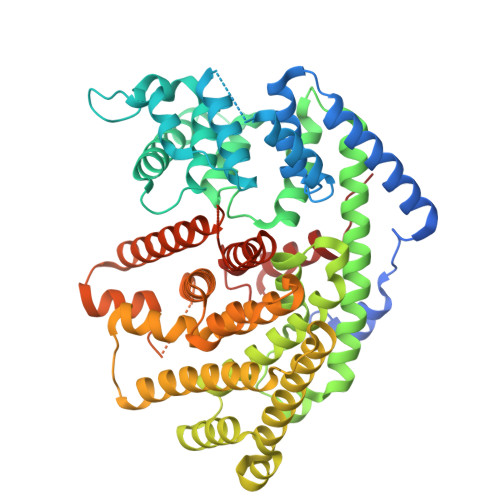Structural insights into monoterpene cyclisation of limonene synthase from Cannabis sativa.
Wiles, D., Roest, J., Vivian, J.P., Beddoe, T.(2025) Biochem Biophys Res Commun 777: 152271-152271
- PubMed: 40592253
- DOI: https://doi.org/10.1016/j.bbrc.2025.152271
- Primary Citation of Related Structures:
9OPS - PubMed Abstract:
Terpenes are the largest and most diverse class of natural products, essential for plant defence, ecological interactions, and environmental adaptation. Cannabis sativa is noted for its rich terpene profile, influencing aroma, flavour, and pharmacological properties. Limonene, a significant monoterpene, is commercially important in the fragrance and flavouring industries, making it a target for metabolic engineering. Terpene biosynthesis involves terpene synthase enzymes that convert isoprenoid diphosphates into diverse terpene scaffolds. Despite advances in terpene biochemistry, C. sativa TPSs lack structural characterisation. This study presents the first crystal structure of (-)-limonene synthase from C. sativa, offering insights into monoterpene biosynthesis. Solved at 3.2 Å resolution, the structure shows an "open" conformation with a solvent-accessible active site and disordered loops near the catalytic pocket, indicating a pre-catalytic state that aids substrate access. Biochemical characterisation confirmed limonene synthase as a highly specific monoterpene synthase, predominantly producing (-)-limonene from geranyl diphosphate with minor amounts of eight other monoterpenes. Kinetic analysis provided a K m of 7.809 ± 0.678 μM and a k cat of 0.0204 s -1 , indicating moderate catalytic efficiency compared to other plant monoterpene synthases. These findings improve understanding of TPS function and set the stage for enzyme engineering to optimise terpene biosynthesis for industrial and biotechnological applications.
- ARC Research Hub for Medicinal Agriculture, La Trobe University, Bundoora, 3083, Australia; Department of Ecological, Plant and Animal Science, School of Agriculture, Biomedicine and Environment, La Trobe University, Bundoora, 3083, Australia.
Organizational Affiliation:
















